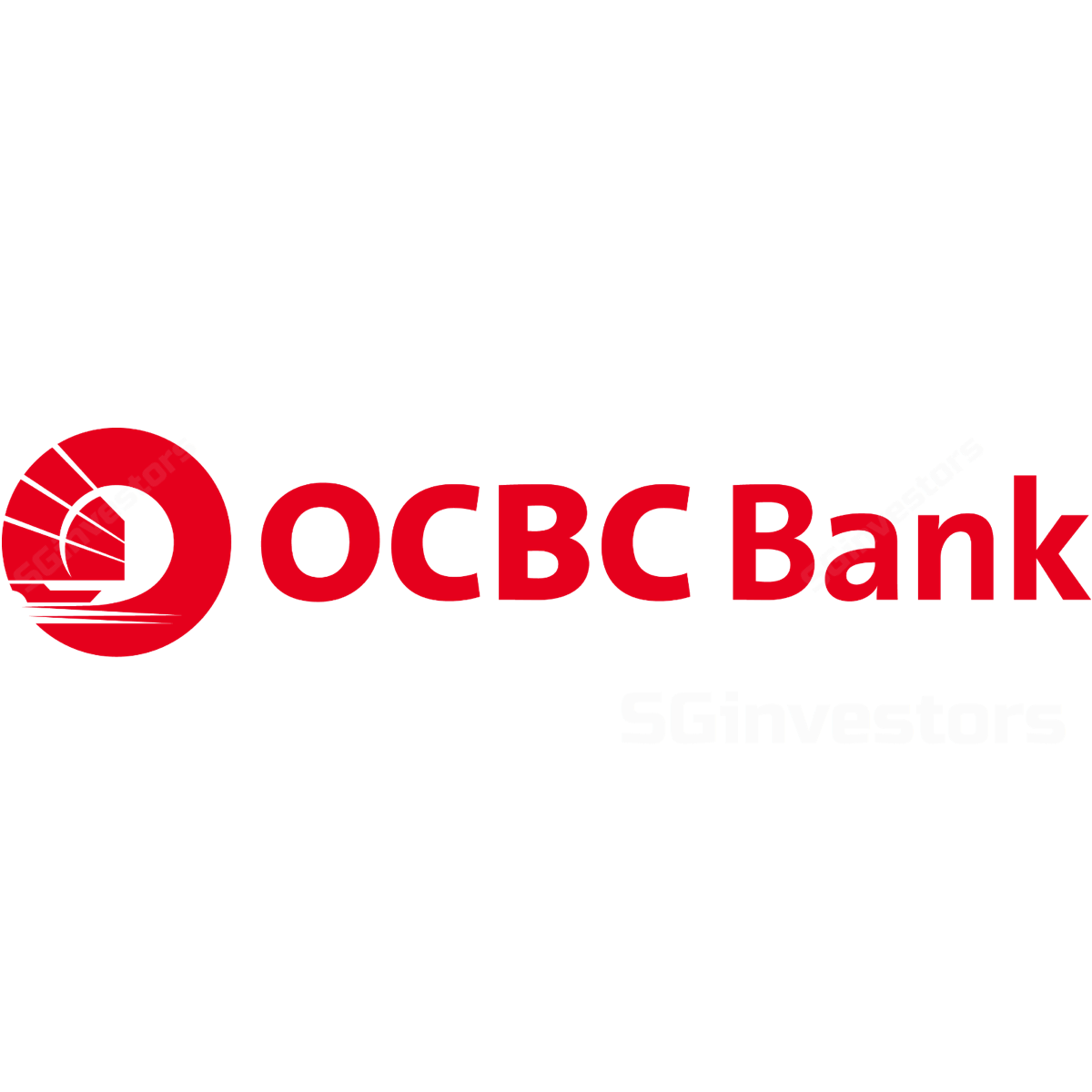 OVERSEA-CHINESE BANKING CORP (SGX:O39)
OVERSEA-CHINESE BANKING CORP (SGX:O39)
OCBC - Surprise Discount On Scrip Dividend
- OCBC's 2Q20 net profit of S$730m (-42% y-o-y/+5% q-o-q) below expectations.
- Continues to write provisions totalling S$750m (1Q20: S$657m).
- Declared dividend per share of 15.9 Scts (2Q20: 25 Scts) representing ~49% dividend payout ratio; scrip dividend with 10% discount.
OCBC's 2Q20 earnings below expectations
Net profit declined to S$730m.
- OCBC (SGX:O39) reported revenues of S$2,625m (flat y-o-y/ +5% q-o-q) as weakness in net interest margin offset better showing in non-interest income weighs. With higher provisions of S$750m (+576% y-o-y/ +14% q-o-q), net profit declined 42% y-o-y/improved 5% q-o-q to S$730m, below expectations.
- Operating costs were well-maintained at -4% y-o-y/flat q-o-q, resulting in lower cost-to-income ratio of 42.2% (1Q20: 44.5%). Capital ratios remain strong with CET1 and total CAR at 14.2%/16.4% respectively.
Net interest income offset gains in non-interest income.
- OCBC's 2Q20 net interest income of S$1,483 declined 7% y-o-y/9% q-o-q, as net interest margin (NIM) declined 16bps q-o-q to 1.60% on lower interest rates and loans declined 1% q-o-q/grew 2% y-o-y due to low demand from consumers and trade.
- Non-interest income of S$1,142m improved 11% y-o-y/32% q-o-q as fee income declines due to reduced customer activity largely on the back of wealth management weakness. This was offset by strong mark-to-market trading income due to favourable market conditions.
- Assets under management at Bank of Singapore rose 8% q-o-q to US$113bn (1Q20 was impacted by market losses). According to management, wealth management’s business momentum increased in May and June with June’s activity levels similar to March’s levels.
- Though momentum is strong, it may be a challenge to return to 1Q20 peak levels.
Total credit costs continue to rise, led by specific provisions.
- Total allowances of S$750m represents higher total credit costs at 97bps (1Q20: 86bps). Total credit costs for 1H20 stood at 91bps (1H19: 25bps). General allowances continued to be high at S$232m, representing 31-bp credit costs (1Q20: 50bps) as management continues to set aside general provisions.
- Special allowances was higher q-o-q at S$518m, representing 66bps credit costs (1Q20: 36bps) to write down remaining OSV NPLs (accounting for S$350m of special allowances).
NPL ratio ticked up slightly.
- NPL ratio increased to 1.6% (1Q20: 1.5%) during the quarter. There is a slight pick-up in NPLs in Malaysia, Indonesia and China. This largely relates to manufacturing and general commerce sectors, including one exposure in Malaysia relating to plantations.
- OCBC continues to expect near-term economic weakness and uncertainty to raise gross NPL ratio to between 2.5-3.5%, incorporating impact from withdrawal of government-sponsored relief programmes. Given increase in provisions, total NPA coverage increased to 101% (1Q20: 90%).
Key takeaways from analyst briefing
Guidances ahead.
- With 2Q20’s exit NIM at 1.55%, management is guiding for FY20 NIM to be within mid-to-high 1.5% range (1H20: 1.68%) and believes there is room to reprice deposits further which should help stabilise NIMs further. Management notes that loan demand is likely to remain muted and maintains a flat loan growth guidance for FY20F.
Dividends and capital.
- Management has applied scrip dividend with 10% discount. Management believes that a 10% discount is in line with previous scrip dividend practices and also with MAS’s guidance. It sees the need for a huge lump of capital due to uncertainties over the severity and length of the COVID-19 crisis. Should there be excess capital post OCBC Wing Hang Bank’s IRAB migration at year-end (current timeline), there can be contemplations on returning excess capital post FY20F.
Thoughts on provisions.
- Maintain guidance of 100-130bps (~S$3 to 3.5bn) credit costs for FY20-21F. Management now has an extremely negative view on OSV as it does not see any increase in deployment of transportation vessels by major oil companies. Hence, the company has further written down the portfolios which are still performing (OSV with charter) where it is now uncertain if cash flows can be sustained. Excluding national oil companies and SG large corporates, remaining OSV portfolio on net basis (loan outstanding minus special provisions) is less than 0.2% of total loan book.
- No identifiable chunky portfolios in OSV on forward looking basis. As OSV special provisions taken this quarter was not part of management’s intention in 1Q20, depending on COVID-19 recovery path, total credit credits across FY20-21F could end up at the higher range.
Moratorium details.
- Moratorium loans represent 10% of total loan book. Management believes a coordinated and orderly approach is needed to manage these loans upon expiry of moratoriums where approximately half of the amounts arise from Malaysia (automatic opt-in) and it remains to be seen if customers are able to service loans upon moratorium expiry. 86% of moratorium loans in Malaysia are secured where > 50% are housing loans with 56% LTVs, the rest are emerging SMEs which are almost totally secured with low LTVs.
- In Singapore, S$1.6bn has been disbursed under the government programme. 96% of Singapore’s moratorium is secured. Half of moratorium loans are to SMEs, 35% to individuals with the rest being loans to corporates.
OCBC - Valuation and recommendation
- Maintain HOLD on OCBC, Target Price $9.30. Our Target Price of $9.30 is based on the Gordon Growth Model (8% ROE, 3% growth, 9% cost of equity). This is equivalent to c.0.8x FY21F P/BV, which is 2SD below its average 10-year forward P/BV multiple.
- See OCBC Share Price; OCBC Target Price; OCBC Analyst Reports; OCBC Dividend History; OCBC Announcements; OCBC Latest News.
Rui Wen LIM
DBS Group Research
|
https://www.dbsvickers.com/
2020-08-07
SGX Stock
Analyst Report
9.300
SAME
9.300

